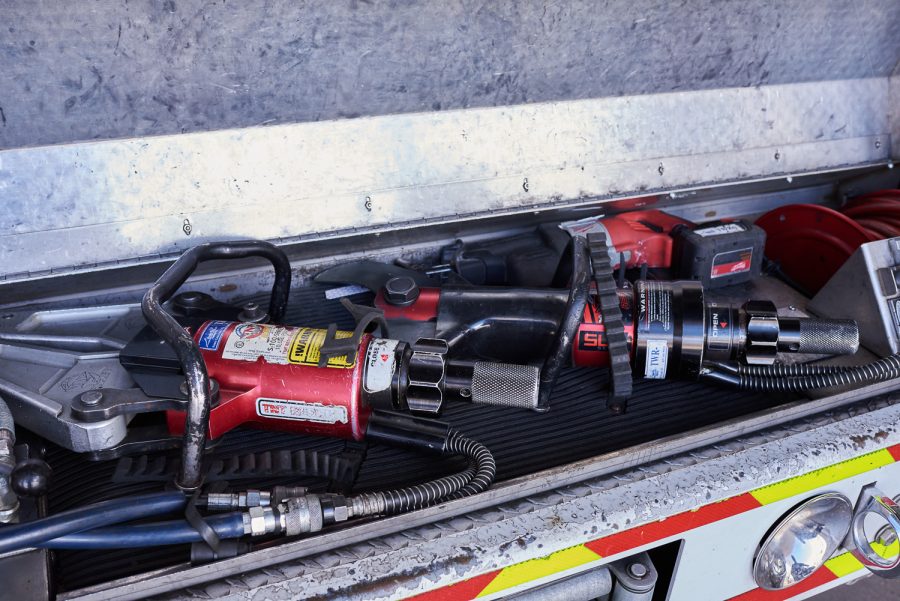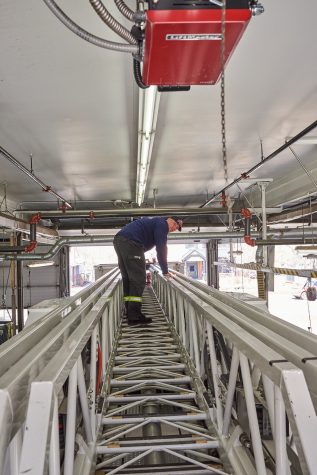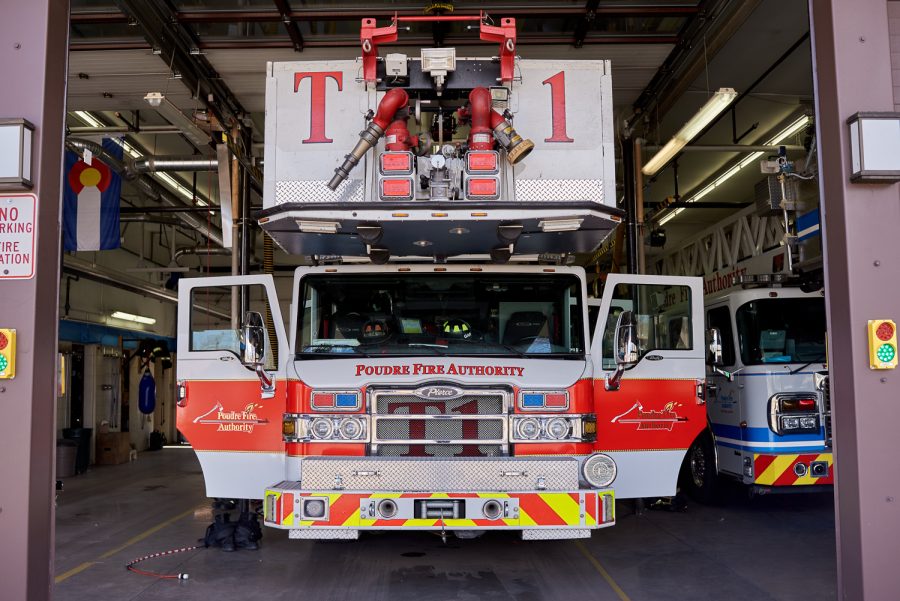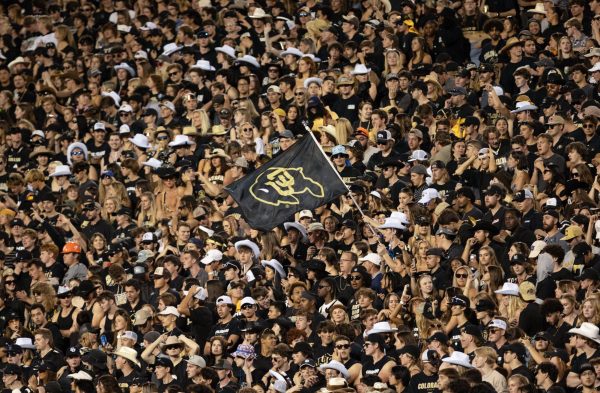Poudre Fire Authority first responders go beyond fire
Collegian | Reuel Indurkar
Poudre Fire Authority’s Tower 1 truck remains parked at PFA’s Station 1 with the doors open to allow for a fast response time to the call April 1.
April 5, 2023
Colorado is no stranger to droughts, dryness and the potential for fires, which means the folks who serve as firefighters are essential guardians of the community.
What many may not realize is that fighting fires is just one part of the job; there are many other aspects of working for departments like Poudre Fire Authority that help serve the community.
Poudre Fire Authority formed in 1981 to serve the 230 square miles surrounding the Fort Collins area as an all-hazards response agency.
The City of Fort Collins and the Poudre Valley Fire Protection District are parent organizations of PFA. These two agencies collaborated through an “intergovernmental agreement” originally passed in November 1980 to form PFA in order to eliminate duplicate services and improve response times, according to the PFA website.
Currently, PFA operates out of 13 fire stations and protects both rural and urban areas throughout Larimer County and Weld County.
Of course, PFA offers help for any emergency situations involving fire, but it’s important to know just how many other services they provide.
“We want people to be able to live their safest lives,” said Annie Bierbower, PFA public information officer and communications coordinator.

As public information officer, Bierbower is responsible for communications and relations between the public and PFA as well as communications during emergencies. Bierbower is in her fifth year with PFA and is helpful in many ways with the coordination and communications of many of these programs.
“Fires are one of our rarer responses,” Bierbower said.
Outside the various forms of fire calls PFA responds to, PFA performs many forms of rescue to include still water, swift water, high angle and confined space rescue, Bierbower said. With all these in mind, Bierbower said 80% of the calls PFA responds to are medical.
Another important component of PFA Bierbower spoke about was the Fire Prevention and Community Risk Reduction division.
This group operates outside of emergency calls in a way that’s geared toward prevention. The group teaches several classes addressing things like how to use a fire extinguisher, making a fire escape plan from your home, installing and checking smoke alarms and a noncertifying friends and family CPR class.
PFA also offers a Youth Firesetter Prevention and Intervention program, which may help young people who have had an accident or experimented with fire to become more educated about the risks and avoid charges. Bierbower said the department’s group of mentors who help teach the class is composed of two firefighters and one risk reduction specialist.
One reality PFA is ready to face is that Fort Collins has grown, and current climate conditions in Colorado present an array of potential risk factors that must all be addressed. PFA Battalion Chief Matt Housley put it best when he said, “Fort Collins is a big city now.”

Housley has been with PFA for 28 years, working his way up from firefighter, driver and captain to his current position. Among other things, Housley is responsible for staffing and training members of PFA as well as command and control of more pressing operational response calls like house fires and technical rescues.
“The days of sitting around waiting for a call to come in are long past,” Housley said. “There’s a lot of stuff that goes on every day.”
Housley discussed the various emergency response calls, training sessions, community outreach events and departmental coordination and preparation measures that keep PFA sufficiently busy. For reference, Bierbower said that on average, PFA responds to 25,000 calls per year.
“I’ve lived here almost my whole life, and sometimes it’s easy to think of Fort Collins as this great little small town that it used to be, but it’s not,” Housley said. “It’s a city, and we have big city problems. Wildfires are no different. As more and more houses have gotten built in the foothills and things have gotten dryer, the wildfire risk is big.”
As for rural areas around Fort Collins, Bierbower said PFA services areas including the Poudre Canyon, Lory State Park, Horsetooth Reservoir and many miles of Wildland-Urban Interface land. These areas are where many residential buildings are located and, therefore, are at a higher risk during wildfires.
“When it’s just a forest that’s caught fire, that’s one thing,” Housley said. “But now when there’s houses and people and cars, it changes the game for sure.”
PFA is an essential asset to the community and is responsible for protecting a sizable amount of land and people, and their work and passion reflect that.
“The most important thing to me is how vast the services are that the fire service provides and how skilled the firefighters are,” Bierbower said. “I’m just blown away every day by the dedication of all the people; I mean, all they want to do is help.”
Reach Miles Buchan at life@collegian.com or on Twitter @buchanmiles.







